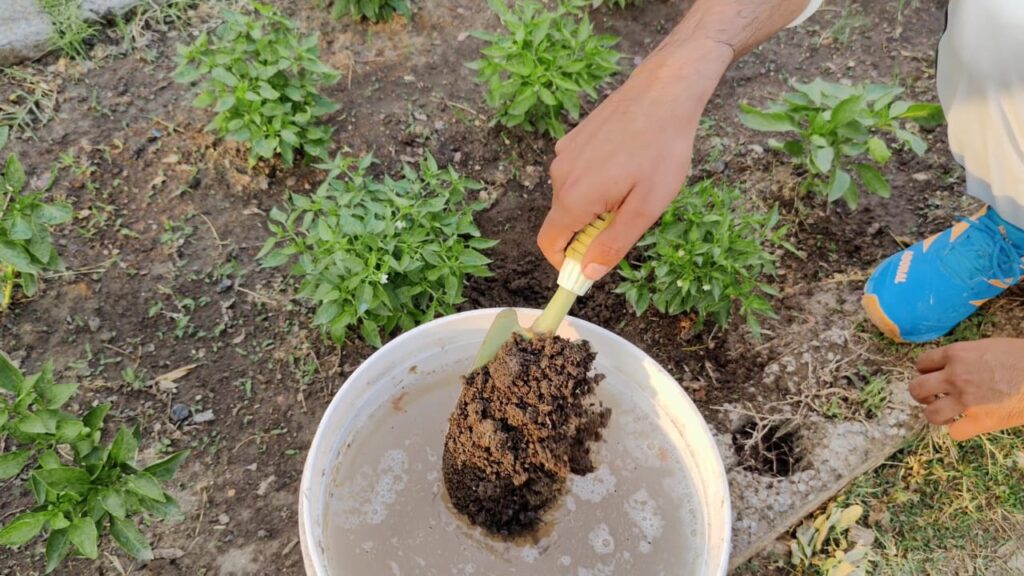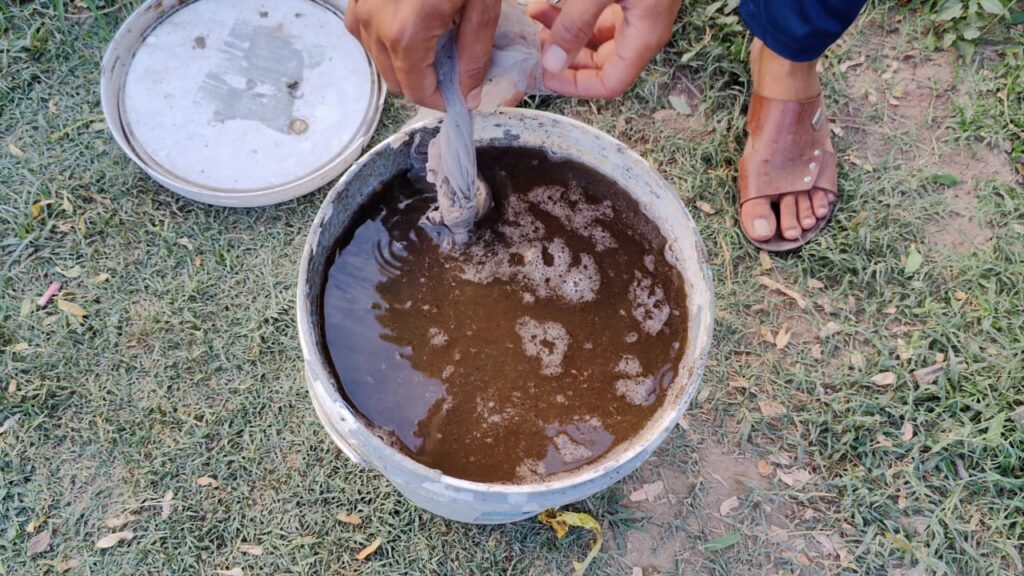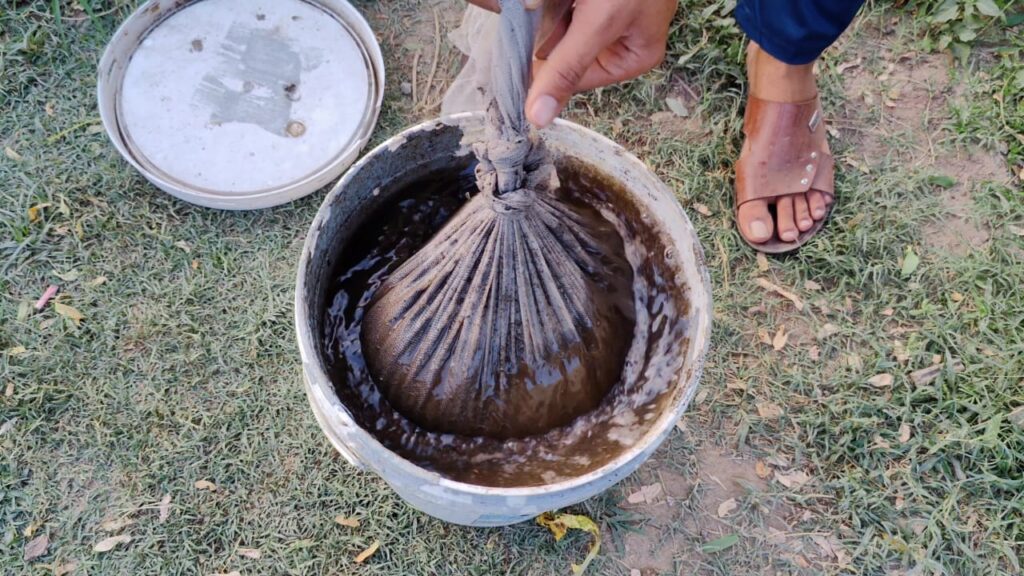Do you want a reasonable and natural approach to increase the health and growth of your plants? Your kitchen pantry is all you need. A basic component in many cuisines, potatoes may be turned into a fantastic liquid fertilizer that promotes soil development, boosts microorganisms, and feeds your plants with necessary nutrients.
Made from only a few fundamental components—boiled potatoes, sea salt, and compost—this straightforward and powerful fertilizer What is the best part? You probably already have these items at home, so it’s a simple and inexpensive method to feed your garden.
This guide will walk you through creating this wonderful liquid fertilizer one step at a time. By the conclusion, you will have the information and tools to design your own potato-based fertilizer and begin noticing the advantages in your garden.
Ingredients Required
Making this amazing liquid fertilizer calls for
Three to four medium-sized cooked potatoes
One equal quantity of compost and one handful of sea salt should be used.
Three liters of non-chlorinated water
A similar fabric or cheesecloth
A loosely fitting lid container
How to Create Potato-Based Fertilizer Step by Step
1. Prepare and Boil the Potatoes

Start with a few potatoes and boil them until soft and tender. This technique helps dissolve the starches in the potatoes, thereby facilitating their nutrient release into the water. Boil, then let the potatoes cool down totally before moving on to the next stage. The cooling procedure guarantees the safety of the potatoes and helps preserve the integrity of the beneficial bacteria that will later come into play.
2. Include Sea Salt for Necessary Minerals

When the potatoes have cooled, sprinkle them with a pinch of sea salt. Not only for seasoning food, sea salt is high in important trace minerals such as magnesium, calcium, and potassium, all of which are absolutely necessary for healthy plant development. These minerals can strengthen disease resistance, enhance soil structure, and boost plant vitality. The sea salt will dissolve into the water, so supplementing it with these vital elements your plants will later benefit from.
3. Combine Compost for Nutrients

Then, include an equal quantity of compost in the combination. Rich in natural nutrients, compost is a great source of good bacteria, helping plant health. These bacteria enhance soil fertility and structure by helping to decompose organic material in the soil. Added to the potato mix, compost provides important nutrients including nitrogen, phosphorus, and potassium, all of which support plant growth. Mix the compost into the combination to guarantee even distribution and let it more effectively release its nutrients into the water.
4. Wrap and Submerge the Combination

When the potatoes, sea salt, and compost are well combined, cover the whole mixture in cheesecloth or any comparable fabric. This approach will keep the particles in check and stop them from floating about in the water. After wrapping, put a stone or any other little weight on the bundle to keep it under the surface of the water. This step is crucial since it guarantees complete immersion of the mixture, thereby enabling even dissolution of the nutrients in the water.
5. Fertilize the Ferment

The fermenting stage is now. Put the bundled bundle in a 3-liter non-chlorinated water container. Using non-chlorinated water is absolutely essential since chlorine can destroy the beneficial bacteria essential for the fermentation process. Your best choice is if you can access rainfall. You may also use tap water omitted for 24 hours, which will let the chlorine fade, though. Cover the container with a loose-fitting lid after submerging the bundle, ensuring it keeps pollutants out while allowing appropriate airflow. Avoid direct sunlight and put the container in a dark or partially shady area since too much heat could damage the microorganisms and ruin the combination. Allow the mixture to ferment for roughly one week. The potatoes will let off their starches, the compost will add beneficial bacteria, and the sea salt will gradually dissolve, hence mineralizing and nourishing the solution.
6. Store and Strain

Take the bundle out of the water after a week of fermentation and throw away the mixture’s solid remnants. Your potato-based fertilizer is the leftover liquid now loaded with necessary nutrients, minerals, and beneficial bacteria. Strain the liquid to get rid of any leftover solids perhaps left behind from the cheesecloth. Store the fertilizer in a clean container for later use after straining. This potato-based fertilizer is now ready for use on your plants, providing them with a natural boost and supporting robust, healthy development.
Fertilizer Application

Using your homemade potato-based fertilizer calls for appropriate dilution to prevent overloading your plants with too many nutrients. The suggested ratio is 1 part fertilizer to 10 parts water. This dilution is essential because the fertilizer in its concentrated form is rather strong and can damage your plants if used undiluted. High nutritional content, particularly the minerals from the sea salt and compost, can lead to “burning,” a condition in which the leaves and roots of the plant suffer. Diluting the fluid guarantees your plants a consistent, reasonable nutrient intake free of stress or harm.
The fertilizer becomes a balanced, healthy solution your plants can absorb more efficiently once diluted. Apart from being a natural soil conditioner, it also provides necessary minerals like potassium, magnesium, and calcium, which are especially important for supporting healthy development. The fertilizer improves soil structure by promoting beneficial microbial activity in the soil. Working to decompose organic material, these bacteria help the soil to hold nutrients and moisture more effectively. By fostering a healthy, balanced ecosystem in the soil, this microbial activity also helps protect plants from dangerous infections.
Applied consistently, this fertilizer will slowly improve the health of your soil, therefore encouraging stronger, more resilient plants. Depending on the kind of plants you are caring for, over time you will see healthier leaves, stronger stems, and more flowering or fruiting. The balanced and organic nourishment offered by the potato-based fertilizer will excite your plants and visibly enhance their growth and general vitality. Be patient; the advantages of natural fertilizers usually take some time to show, but with regular application, you will notice a considerable change in the long-term health of your garden.
Final Thoughts
A quick and simple approach to providing your plants the nutrients they require to flourish is making a potato-based liquid fertilizer. Made with cooked potatoes, sea salt, and compost, this natural and affordable fertilizer helps to create soil, promote microorganisms, and supply necessary nutrients. Try it and watch how it changes your garden!

